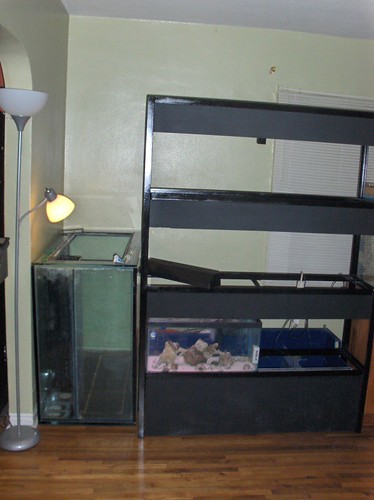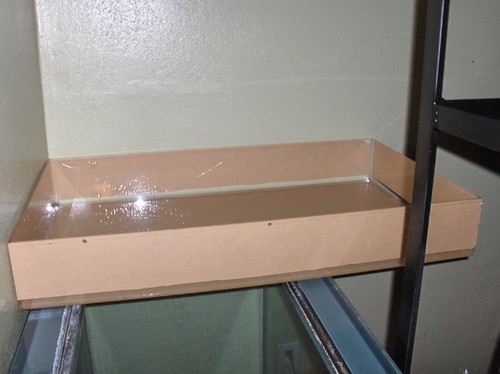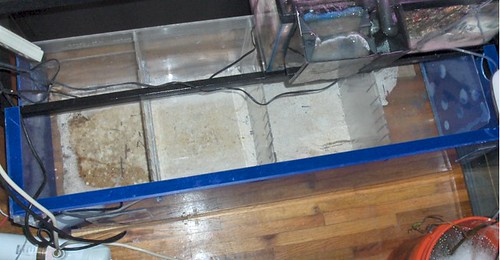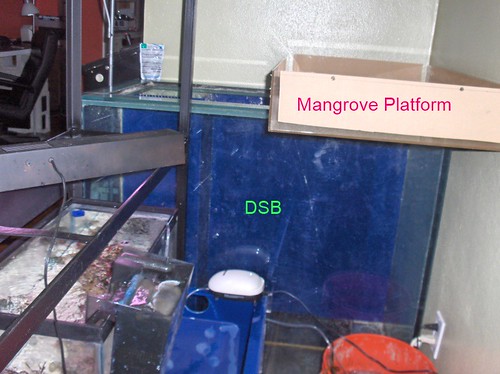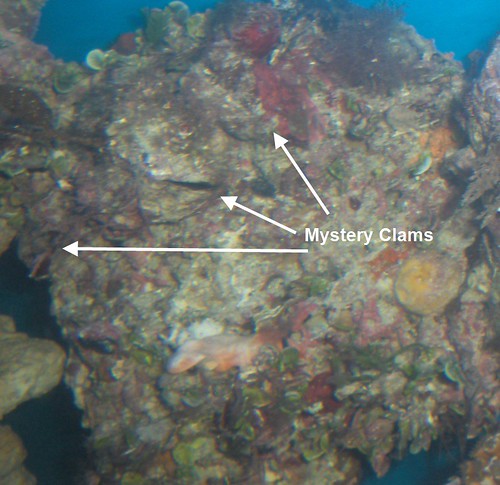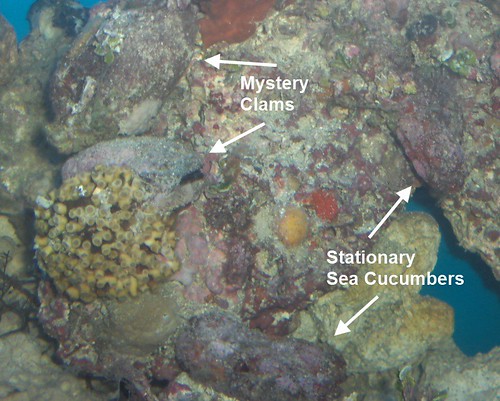MadReefist
New member
CLOSED LOOP SYSTEM:
Tank Space:
-8 15g tanks (one truly isolated for deep quarantine, so 7 actual).
-1 120g tank.
Filter Space:
-150g Deep Sand Bed fuge (42" tall) w/ macroalgae, (true, gulf) live sand (deepwater, and wet beach sand collected from different fraction layers), macroalgae coated awesome live rock aquacultured in the Gulf of Mexico, (true, bay) live mangrove mud, large root (eventually) mangrove(s), dead space plenum underneath. Probably 20g of this massive .75" thick glass tank is dedicated to the overflow section, so 130g actual. Roughly 6-10" will be water.
-45g sump with many options.
-6 or 7 4g square buckets stacked as a wet/dry tower (that rests into the 45g sump, w/ its own pump).
-16g acrylic box that has a surface area of 35"x20" (35x20x5.25"), which hoists a foam-floating mongrove grid plaform which (luckily) perfectly accomodates 84 mangroves at a 3" grid space.
Extra Filters:
-A huge canister filter w/ micron filter chargeded w/ diatomaceous earth.
-18" UV sterilizer.
-Considering purchasing a used huge 5' protein skimmer at a steal, but might skip that after re-reading about mangrove filters (been out of the hobby for 6 years).
-Macro-Algae: I intend to get at least 1 of every possible plant I can find from vendors and within the bay/gulf.
-Detrivores: I intend to acquire all I can find in live cultures online, in live media, and etc.
Filter Media (inside the wet/dry tower):
-Several layers of course, and then 'blue' filters floss, above layers of 100 and then 50 micron + Aquamaxx "Pureflo" filter screens (top of the tower).
-40oz Boyd Chemi-Pure.
-250ml Brightwell PhospahtR (rechargable).
-Brightwell Neo Zeolite (probably 1L at a time).
-500ml Seachem Purigen (rechargable).
-Seachem Renew (probably 1L at a time).
-Seachem Cuprisorb (rechargable).
-8fl NP BioPellets.
-1.5L of activated carbon (to start off with, as it came with some of this equipment I've acquired).
-12g of CPR Bio-Bale Media.
-4g+ bioballs.
-4g live rock fragments from as many sources as possible (bottom of the tower, mostly submerged underwater).
-Live rock in every tank, but different substrate strategies employed from tank to tank.
-Maximum mini/micro-fauna in the sump filters.
-Cleanup crews all around.
-Armies of cleaner / filter-feeder crews potentially at 15g strategic tank sectors.
TOTAL SYSTEM BUDGET:
Small. Basically $1000. The best part is I already have virtually every piece / filter element. I wont list the actual systems costs until its done, but I'm excited for when I can explain how cheap some of the most massive elements of this system were achieved.
HOLDUPS:
All I'm missing is the square buckets which I have to drive 35mins to get for $1 each. Also most of the filter medias, although they're all ordered and I'm awaiting their arrival. Also missing the live rock needed to fill 6 of the 15g tanks, and their substrate(s). Also most of the volume of substrate to fill the DSB, although several key live layers are in possession.
So virtually every component is in place, just need to drill some more holes in some of the 15g tanks as needed to accomodate the unique gravity distribution required for this complex multi-vessel dual-sump apparatus.
SYSTEM:
It could be described as starting from the outlet of the DSB sump.
This will feed into one of the top 15g tanks.
The 15g tanks are in a steel store grade display frame that houses 8 tanks, 2 side by side.
The water will then overflow thru several of the 15g tanks, and then finally into the inlet of the 35x20" mangrove platform, and then that will overflow into large "perf" pipe that enters the plenum platform "dead space" underneath the the DSB. This will have a layer of screen, crushed coral, screen. crushed coral, course Gulf live sand, crushed coral, screen, submerged level beach sand, mangrove mud, submerged level beach sand, "sugar sand", aereobic level beach sand, special source truly live sand... water, plants, fauna.
Now that water will feed into the other top level 15g tank, which eventually then overflows its way into the MDT.
Main display tank will be a community tank, bent especially on schooling / shoalling fishes, but also features rocks that have corals and other creatures embedded that the live rock at your LFS couldn't dream of (locally picked up Florida aquacultured rock beats all others hands and feet down, to a degree you cant hardly understand without having it). I can't wait to post these photos...
After a semi-equal gravity distance as the DSB sump, the water drops its way into the 'wet/dry' sump. This 45g sump is an acrylic store fish display vessel that is divided into 4 chambers. The first chamber is all water with the wet/dry tower tower resting in it, and pump plumbing that cycles the water from this chamber into the top of the tower. The lower freeflow cuts in the partition plates are blocked between the 3rd and 4th chambers. This means I have 2 more 10g chambers to house added refugium elements in or flow extra filters thru.
The large canister loaded with diatoms will be closed loop into this sump housing as an extra element. I'd like to flow the return water thru this on its way back into the system, but that would hassle my return pump, which luckily is the same as the pump for the return from the DSB sump. Obviously, the return pipes from each sump not only have to be the same height, but the same exact specs as well, or else one sump will outpace and overrun the other.
The final tank that feeds into the wet/dry sump overflows into the 18" UV filter on its way into the sump. This same tank aslo has its own 'spiral' UV filter. This is the secondary stage of the quarantine element to this system.
Tank Space:
-8 15g tanks (one truly isolated for deep quarantine, so 7 actual).
-1 120g tank.
Filter Space:
-150g Deep Sand Bed fuge (42" tall) w/ macroalgae, (true, gulf) live sand (deepwater, and wet beach sand collected from different fraction layers), macroalgae coated awesome live rock aquacultured in the Gulf of Mexico, (true, bay) live mangrove mud, large root (eventually) mangrove(s), dead space plenum underneath. Probably 20g of this massive .75" thick glass tank is dedicated to the overflow section, so 130g actual. Roughly 6-10" will be water.
-45g sump with many options.
-6 or 7 4g square buckets stacked as a wet/dry tower (that rests into the 45g sump, w/ its own pump).
-16g acrylic box that has a surface area of 35"x20" (35x20x5.25"), which hoists a foam-floating mongrove grid plaform which (luckily) perfectly accomodates 84 mangroves at a 3" grid space.
Extra Filters:
-A huge canister filter w/ micron filter chargeded w/ diatomaceous earth.
-18" UV sterilizer.
-Considering purchasing a used huge 5' protein skimmer at a steal, but might skip that after re-reading about mangrove filters (been out of the hobby for 6 years).
-Macro-Algae: I intend to get at least 1 of every possible plant I can find from vendors and within the bay/gulf.
-Detrivores: I intend to acquire all I can find in live cultures online, in live media, and etc.
Filter Media (inside the wet/dry tower):
-Several layers of course, and then 'blue' filters floss, above layers of 100 and then 50 micron + Aquamaxx "Pureflo" filter screens (top of the tower).
-40oz Boyd Chemi-Pure.
-250ml Brightwell PhospahtR (rechargable).
-Brightwell Neo Zeolite (probably 1L at a time).
-500ml Seachem Purigen (rechargable).
-Seachem Renew (probably 1L at a time).
-Seachem Cuprisorb (rechargable).
-8fl NP BioPellets.
-1.5L of activated carbon (to start off with, as it came with some of this equipment I've acquired).
-12g of CPR Bio-Bale Media.
-4g+ bioballs.
-4g live rock fragments from as many sources as possible (bottom of the tower, mostly submerged underwater).
-Live rock in every tank, but different substrate strategies employed from tank to tank.
-Maximum mini/micro-fauna in the sump filters.
-Cleanup crews all around.
-Armies of cleaner / filter-feeder crews potentially at 15g strategic tank sectors.
TOTAL SYSTEM BUDGET:
Small. Basically $1000. The best part is I already have virtually every piece / filter element. I wont list the actual systems costs until its done, but I'm excited for when I can explain how cheap some of the most massive elements of this system were achieved.
HOLDUPS:
All I'm missing is the square buckets which I have to drive 35mins to get for $1 each. Also most of the filter medias, although they're all ordered and I'm awaiting their arrival. Also missing the live rock needed to fill 6 of the 15g tanks, and their substrate(s). Also most of the volume of substrate to fill the DSB, although several key live layers are in possession.
So virtually every component is in place, just need to drill some more holes in some of the 15g tanks as needed to accomodate the unique gravity distribution required for this complex multi-vessel dual-sump apparatus.
SYSTEM:
It could be described as starting from the outlet of the DSB sump.
This will feed into one of the top 15g tanks.
The 15g tanks are in a steel store grade display frame that houses 8 tanks, 2 side by side.
The water will then overflow thru several of the 15g tanks, and then finally into the inlet of the 35x20" mangrove platform, and then that will overflow into large "perf" pipe that enters the plenum platform "dead space" underneath the the DSB. This will have a layer of screen, crushed coral, screen. crushed coral, course Gulf live sand, crushed coral, screen, submerged level beach sand, mangrove mud, submerged level beach sand, "sugar sand", aereobic level beach sand, special source truly live sand... water, plants, fauna.
Now that water will feed into the other top level 15g tank, which eventually then overflows its way into the MDT.
Main display tank will be a community tank, bent especially on schooling / shoalling fishes, but also features rocks that have corals and other creatures embedded that the live rock at your LFS couldn't dream of (locally picked up Florida aquacultured rock beats all others hands and feet down, to a degree you cant hardly understand without having it). I can't wait to post these photos...
After a semi-equal gravity distance as the DSB sump, the water drops its way into the 'wet/dry' sump. This 45g sump is an acrylic store fish display vessel that is divided into 4 chambers. The first chamber is all water with the wet/dry tower tower resting in it, and pump plumbing that cycles the water from this chamber into the top of the tower. The lower freeflow cuts in the partition plates are blocked between the 3rd and 4th chambers. This means I have 2 more 10g chambers to house added refugium elements in or flow extra filters thru.
The large canister loaded with diatoms will be closed loop into this sump housing as an extra element. I'd like to flow the return water thru this on its way back into the system, but that would hassle my return pump, which luckily is the same as the pump for the return from the DSB sump. Obviously, the return pipes from each sump not only have to be the same height, but the same exact specs as well, or else one sump will outpace and overrun the other.
The final tank that feeds into the wet/dry sump overflows into the 18" UV filter on its way into the sump. This same tank aslo has its own 'spiral' UV filter. This is the secondary stage of the quarantine element to this system.

